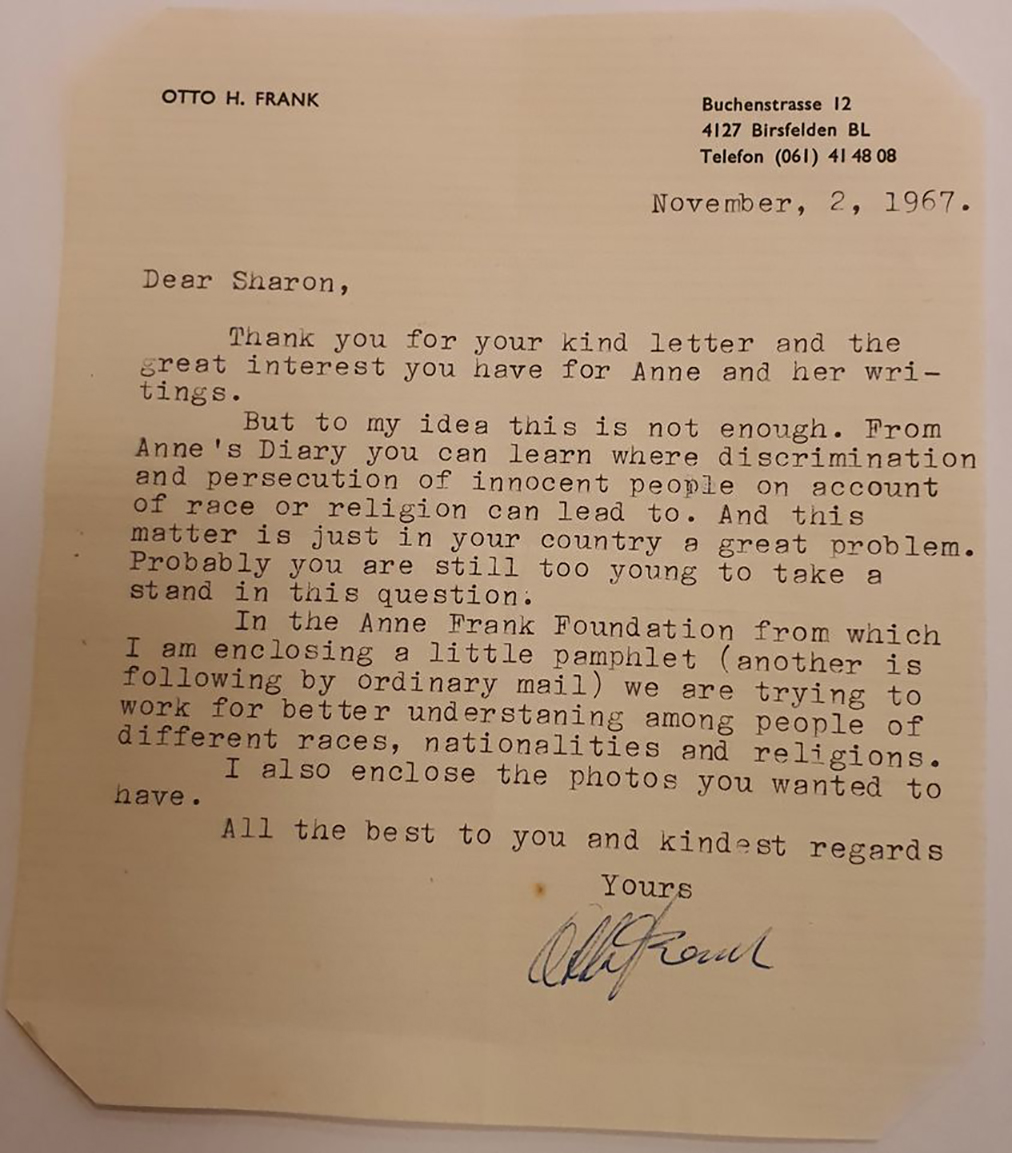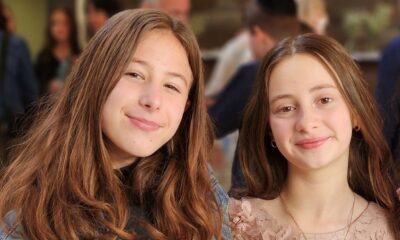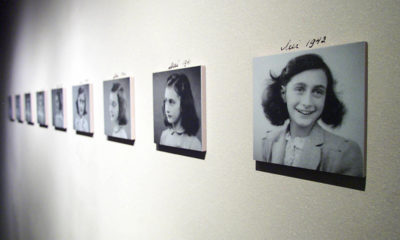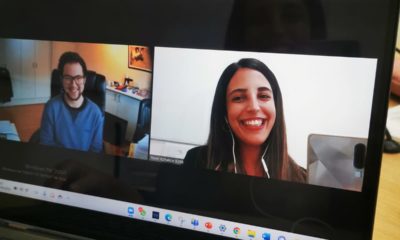
Jewish News

Otto Frank letter a rare find for Cape Holocaust centre
We all feel connected to Anne Frank in some way, but now an even closer connection has been made to her in Cape Town. A letter from Otto Frank dated 2 November 1967 was donated to the Cape Town Holocaust & Genocide Centre (CTHGC), along with photographs of Anne and Margot Frank taken before the war.
The collection was donated by Robin Sharon Papayanni earlier this year. In the letter, Frank talks about the aims of the Anne Frank Foundation, and goes on to say that apartheid in South Africa is a ‘great problem’ which can be solved using the principles in Anne’s writing.
CTHGC Head of Archives Dmitri Abrahams told the SA Jewish Report how the items came to the centre. “Robin Sharon Papayanni [who goes by Sharon] received this letter from Otto Frank in response to a letter she sent him. In her letter, she expressed her admiration for Anne and her writing, and asked him to send her photos of Margot and Anne. She kept the items in a drawer at home until she decided it was time to place them in a more secure location and for them to be available to researchers and academics.”
As an archivist and historian, Abrahams was “awestruck and humbled by these important historical items” when Papayanni presented them to the centre. “Not only is it an original letter signed by Otto Frank, but he also refers to the socio-political situation in South Africa at the time, which is a very rare find. I would even go so far as to say it’s one of a kind. Such a rare find is an important addition to our archive.”
The letter and photos will be reproduced and used in an educational programme that the centre is developing for younger learners. “The originals will be wrapped in acid-free tissue paper, placed in acid-free archival grade boxes, and in permanent storage in a climate-controlled storage room at our partner institution, University of Cape Town [UCT] Special Collections,” he says. “Though our collections are kept at UCT, the CTHGC remains the custodian of all the material placed in the UCT archive.”
Abrahams says it’s extremely meaningful to have these items in this archive. “The items prove indisputably that people recognised early on that the lessons of the Holocaust could be used to teach about the effects of unchecked prejudice and discrimination. The letter also serves as proof that people recognised that apartheid was wrong. As such, it will be used to teach young people not only about the Holocaust but also about apartheid.”
The public can see the letter and photographs over the upcoming summer holidays. “They will be on display at the centre from 1 November 2021 until 31 January 2022. Thereafter they will be digitised, placed in permanent storage, and made available online alongside our other collections,” says Abrahams.
“We urge people who have artefacts, documents, photographs, and items related to the Holocaust, World War I, World War II, Jewish life in Europe before, during, and after the Holocaust to consider donating these objects to our archive,” he says. “This will ensure that they are preserved for future generations and available to researchers and academics.”
The CTHGC archive is supported by the Claims Conference (Conference on Jewish Material Claims Against Germany).
The link to the centre’s digital finding aid is: https://atom.lib.uct.ac.za/index.php/za-uct-bc1556-a










